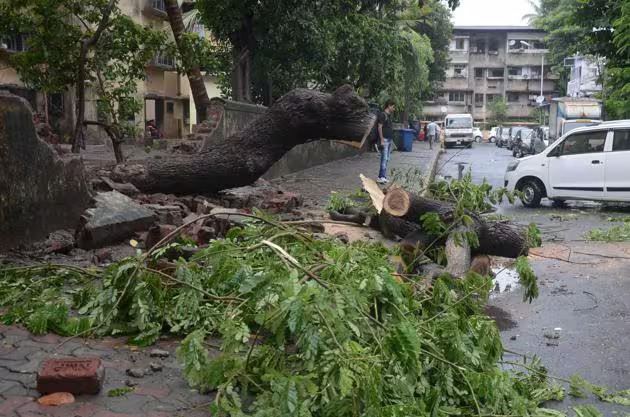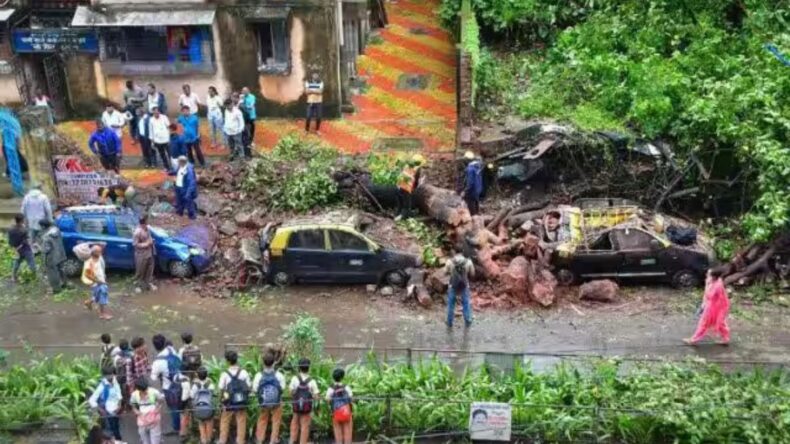Mumbai, India, renowned for its bustling city life, is currently grappling with a severe natural calamity that threatens its environmental wealth. The city has been relentlessly battered by torrential monsoon rains, leaving a trail of destruction in its wake. Over the past week, Mumbai has witnessed a significant loss of its green cover, with more than 100 trees collapsing due to the ferocity of the downpours.
Urban Development and Neglect Take a Toll on Trees

The onset of the monsoon season in Mumbai, commencing on June 25, brought forth unyielding heavy rainfall. Data recorded by the Brihanmumbai Municipal Corporation (BMC) indicates that between July 18 and 23, a staggering 113 trees collapsed in the island city and its suburbs. Particularly severe was the period between July 19 and 20, when 56 trees were uprooted in just 48 hours. The western suburbs bore the brunt of the devastation, with 50 trees falling, while the eastern suburbs saw 32 trees collapse, and the island city witnessed 31 trees uprooted.
Civic officials from the tree department attribute these tree collapses to the ongoing infrastructure and real estate projects in the city, which necessitate extensive digging. Coupled with the relentless rainfall and strong gusts, the trees’ stability is compromised, causing them to succumb to the pressure and fall. Moreover, the water-laden leaves and branches during the rains contribute to the increased weight of the trees, making them more susceptible to collapse.
The Consequences of Concretization in Mumbai
A deeper analysis reveals that one of the contributing factors to this calamity is the concretization of tree basins. Common practice in Mumbai, this process disrupts the natural water flow and robs the trees of vital soil moisture. Consequently, the trees become dehydrated, lose their equilibrium, and become prone to collapsing at the slightest hint of rain.
In 2015, environmentalists had already foreseen this outcome and taken proactive measures. They approached the National Green Tribunal (NGT) of India, urging protective measures to preserve Mumbai’s green heritage. Mr. Stalin D, an environmentalist and director of the NGO Vanashakti, voiced concerns about the concretization of tree basins, citing it as a significant reason behind the alarming rate of tree collapses in the city. Unfortunately, despite NGT’s orders for remedial actions, little progress has been made, with only superficial measures like branch pruning being taken. These actions fail to address the core issue of disrupted soil moisture, thus failing to restore the trees’ balance.
Private Building Negligence: A Threat to Residents and Trees
It is crucial to note that the impact of these tree collapses extends beyond public spaces. Many fallen trees were located on the periphery of private buildings and societies. Negligence by some building owners, who fail to conduct regular tree pruning, is a contributing factor to this alarming trend. This negligence poses a threat to residents and underscores the need for proactive tree maintenance practices in both private and public spaces.
As the city grapples with the consequences of rapid urban development and environmental neglect, the urgency to protect and preserve Mumbai’s green spaces has reached a critical juncture. The loss of over 100 trees within a week serves as a wake-up call for immediate action. To address this issue effectively, comprehensive measures must be taken to conserve tree basins and ensure proper maintenance. Civic authorities are urging private building owners and societies to take responsibility and play an active role in nurturing the city’s green cover.
Creating awareness about the importance of trees and their essential role in maintaining ecological balance is paramount. Mumbai’s citizens need to realize that protecting the green spaces within the city is not just a civic responsibility but also an obligation towards future generations.
As Mumbai battles the dual challenges of rapid urban development and negligence, the need for immediate action to protect and preserve the city’s green spaces has become more critical than ever. Implementing comprehensive measures to address the root causes of tree collapse, such as conserving tree basins and ensuring proper maintenance, is the need of the hour. Only through such concerted efforts can Mumbai hope to safeguard its green heritage and create a sustainable environment for its citizens.












